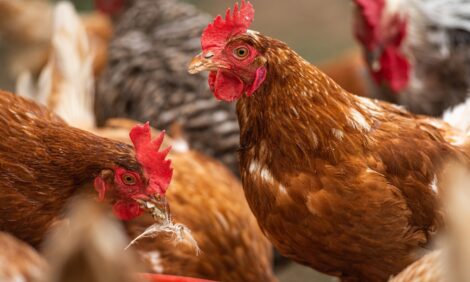



Scientists Seeking Better H5N9 Flu Vaccines
UK - Work is underway at The Pirbright Institute to produce vaccines against influenza A(H7N9) that can be grown more quickly and provide a much broader range and more long-lasting protection than is presently achievable.In the space of just a month, a novel influenza virus originating in birds has infected 129 people in China and killed 20 per cent of those infected. Patients infected with this H7N9 subtype virus have demonstrated severe respiratory problems and required intensive medical care. So far, there has been no evidence of the virus being able to pass from human to human and infection of people has only occurred from direct contact with birds, most likely poultry, in the large wet markets of China where live birds are sold for meat.
Whether this virus, which is a genetic reassortant of up to four different avian Influenza viruses, is likely to develop human transmissibility is the big question being considered by influenza scientists. Genetic analysis of the virus shows two human adaptation motifs leading firstly to an enhanced ability to bind to receptors in the human upper respiratory tract and secondly an adaption of the polymerase gene, making it more efficient at replicating inside human cells. Other mutations in this virus are required to enable human transmission and whether they are the same mutations that allowed researchers to generate transmissible H5N1 viruses in the laboratory last year is unclear. However, the longer that this virus is able to circulate unchecked in the avian population the greater the chance that the adaptations required for human transmissibility may come about, either by a reassortment event or the random accumulation of the relevant genetic mutations.
Although the chance of direct infection of people from birds appears very low the consequences are severe: presently about 20 per cent of those infected in China have died from the disease. This is lower than that seen with H5N1 where approximately 58 per cent of those infected died but much higher than the 2009 H1N1 pandemic (0.02 per cent fatality) or even the 1918 'Spanish Flu' with a case fatality rate of three per cent.
Whilst the virus remains as one primarily circulating in birds, breaking this cycle of replication is the only effective response to its control and the Chinese authorities have already implemented appropriate measures. Poultry markets in Shanghai and other affected areas have been closed, reducing the mixing of birds and human-bird contact. Once infected flocks are identified the OIE (Word Organisation for Animal Health) recommends culling as the first action to prevent further transmission. However, whilst the virus is present in free-flying domesticated and wild birds this may not be fully effective and vaccination may need to be considered.
Vaccination against influenza is widely practised in people, in the form of the seasonal 'flu jab', and had been used by China and other countries to control influenza in poultry. A significant difficulty with this approach is that conventional vaccines take several months to produce in usable quantity and are highly tailored to the virus they are used to control. Mutational changes in the virus may enable it to continue to replicate and spread.
Work is underway at The Pirbright Institute to produce vaccines that can be grown more quickly and provide a much broader range, and more long lasting, protection than presently achievable. Collaborations with Oxford University and Imperial College London aim to demonstrate efficacy in other species, including humans. One vaccine recently developed at the Institute is presently being tested for its ability to protect against H7N9.
In other work at the Institute, researchers are identifying genetic lines of chicken that are naturally resistant to influenza infection and are also developing tests that can give a rapid read-out of an animal's infection status without having to take samples back to the laboratory. Rapid diagnosis in the field is particularly important as H7N9, unlike H5N1, is clinically silent: infected birds appear normal and well. Taken in combination these projects will provide a significant advance in the ability to control influenza in all species.
Work on these projects is funded by the Biotechnology and Biosciences Research Council (BBSRC) and the EU. UK collaborations continue with The National Institute for Medical Research, The Animal Health and Veterinary Laboratories Agency (AHVLA), Oxford and Cambridge Universities and Imperial College. International collaborations include those with several influenza laboratories in China, the US and EU.









